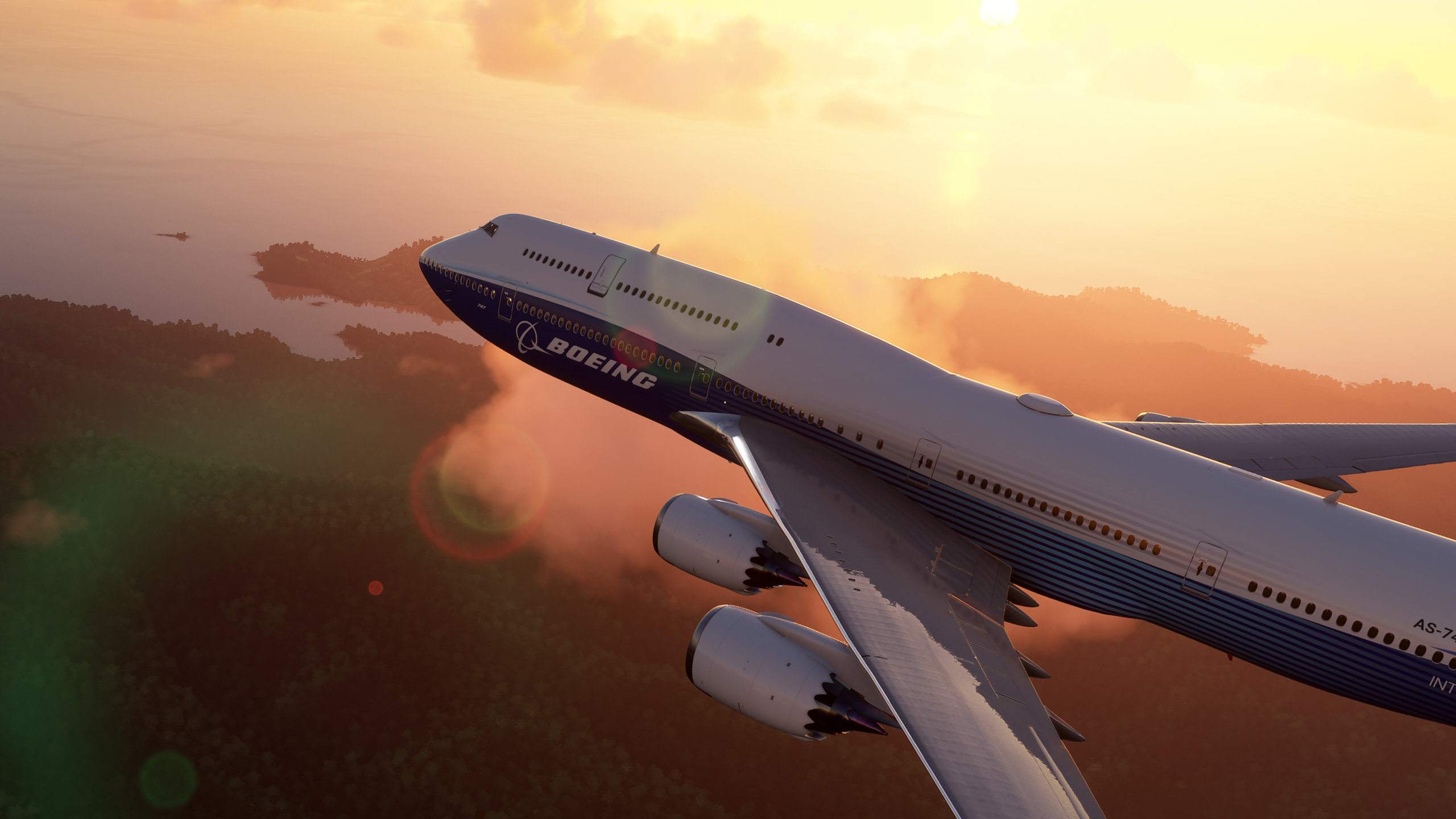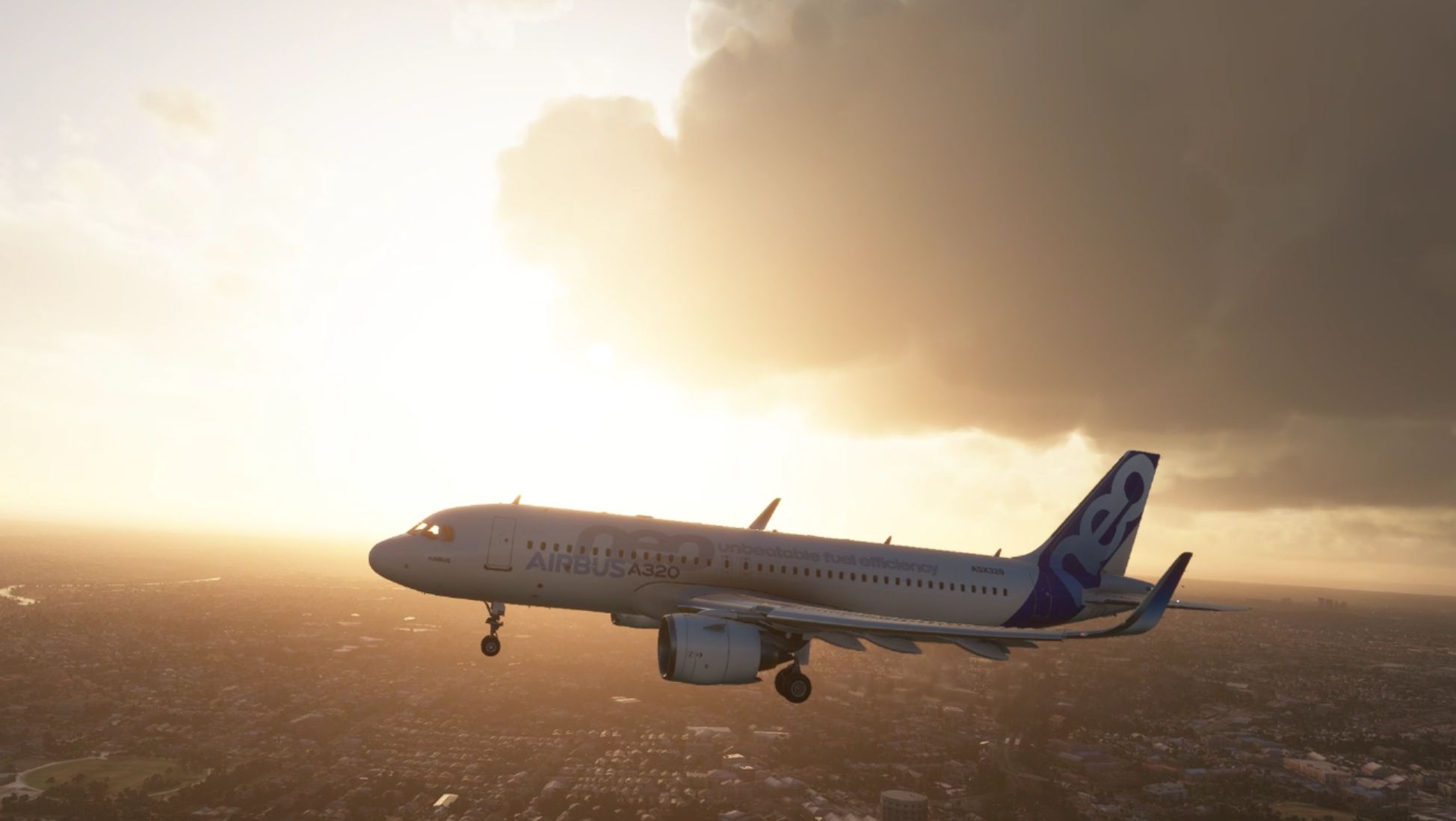Microsoft Flight Simulator review in progress: A fantastic landmark with some issues you should know about

Note: We received code for this game later than hoped, and our reviewer will need a little extra time for the full review.
Whatever criticism you might throw at Flight Simulator 2020, it’s tempered by the fact it recreates the entire planet in extraordinary detail, and then lets you fly anywhere on it.
What an incredible achievement. Harnessing the power of Bing Maps, Azure AI and photogrammetry data, developer Asobo has built an open world to rule them all, and the sheer implausibility of that fully explorable virtual earth gives this a much broader appeal than a flight simulator should, by rights, possess. Just as much as it’s a learning tool for enthusiasts and pilots in training, it’s also a game, and one for people who couldn’t give a toss about ILS vectors. It should please both crowds enough to become a stalwart of the PC gaming landscape for years to come.
With that considerable caveat in place, let me say this: the more time I’ve spent with Flight Simulator 2020, the more frustrated I’ve become.
It’s early days, of course. Most short-haul airlines require 3,000 hours of flight time in order for a pilot to become eligible to captain a plane, and I’ve been at it about a week. But what I’m getting a strong sense of already is that as an educational tool this isn’t a teacher, but a classroom.
The flight school offers a handful of lessons that do get you to grips with the very basics of controlling a Cessna above the scenic red rock landscape of Sedona, AZ, and thankfully the Superman 64 hoops from FSX are now gone. But there’s so much it doesn’t tell you.
It's an empty classroom. All the world’s airports to take off from, but no one to tell you what all the ATC chatter means. Nobody telling you about VOR flight plans or ILS approaches, or to point out that you don’t need to sit on the yoke making tiny adjustments for 14 hours on a Dreamliner flight across continents.
Obviously the community will barrel in and become the teachers, populating YouTube with every kind of tutorial imaginable. We all know this will happen, but it would have been nice for Asobo’s own flight school to cover more than takeoffs and landings. As it is, I’m spending a lot of time at the moment wondering why I messed up and feeling a distinct lack of feedback.
Some of my frustration’s a bit more shallow than that, though. In sleepy rural landscapes I can get frame rates approaching 60 at ultra settings with my RTX 2080 Ti, I7 9700K and 16GB RAM, but once the buildings enter the screen I’m often down below 20. In fact there are certain places in the world I simply can’t fly—New York is off limits, even at the lowest graphical preset, struggling to produce even 20fps. Same goes for Toronto. Crashes (the game, not the plane) are common in these areas, and it’s also crashed to desktop for me whenever I plugged in or unplugged a device. We all want our game to look like that trailer, but even with top-end hardware it seems a pipe dream at the moment.

Both of these are short-term problems. The information will come, whether it’s Asobo who deliver it directly or the community. And the frame rates will improve, whether by game updates, driver updates, or in the longer term new GPUs. So I have to put that frustration aside, and consider what Flight Simulator 2020 means in the long-term: it’s a transcendent bit of software.
It can be a medium for virtual tourism with an Xbox controller in your hands, managing a simplified flight model and gawking at the Kola superdeep borehole or the Vredefort crater, or your house, or the Vinicunca rainbow mountain. It’s worth the price of admission on those terms alone.
And with a flightstick, a throttle, and a few instrument panels on your desk, it can become an ultra-realistic simulation ready to nudge X-Plane 11 aside. Calibrating these devices is a bit of a pain at the moment, with some controls mapped twice by separate controllers (throttle mapped to my actual throttle and a slider on my flightstick), but the feeling of immersion is fantastic. And I can’t even get my head around the potential of the upcoming VR version.

Asobo has a roadmap that extends well beyond release day, promising updates to both the world map and the flight model on an alternating, monthly basis. What it needs every bit as much is greater curation of experience. The landing challenges and bush flights tucked away in its menus are fantastic digestible experiences, and I want more of them. I want sightseeing tours of famous landmarks and natural oddities, and extreme weather challenges. At present these curated scenarios hold the most draw for me as I try to apply my developing knowledge base to different aircraft, approaches, and weather conditions.
That’s where I am with Flight Simulator 2020 so far. Bugged by annoyances that I have to let go, because of the sheer achievement in long-focus scale. The opportunity to explore the world in as high fidelity as we’ve ever seen it in a game simply overrides my befuddlement at learning to fly without any teachers, and doing so at 27fps.
